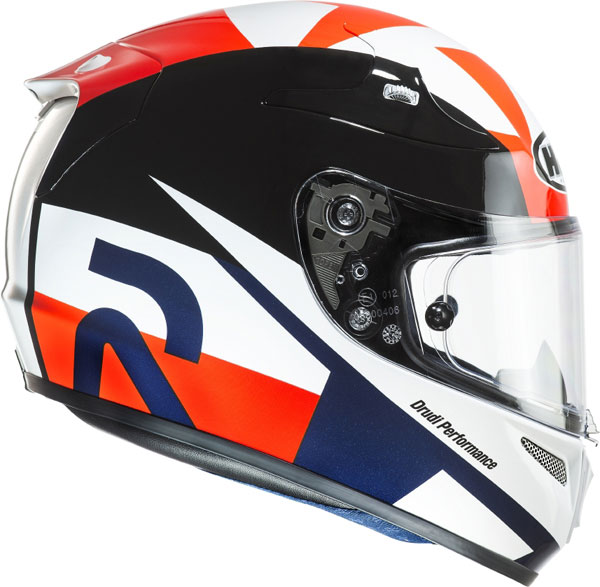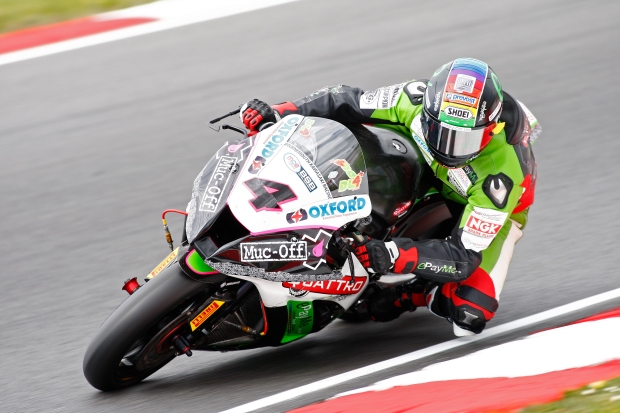
Roads ace Ivan Lintin, 31, from Bardney in Lincolnshire, has bikes running through his blood.
He cut his teeth competing in speedway and sand racing before switching to the British Supermoto Championship at 19. It was a baptism of fire, and in his first season the young Lintin broke his collarbone three times.
After a period of recovery, 2006 saw Lintin turn his attention to circuit racing, and he won his first race after just two races, eventually finishing second in one championship, and third in another.
The following season saw him win his first pure road race championship – the Irish 250cc – 400cc support class – and that led to him signing for a factory supported team, RC Express Racing, where he competes on the national and international road racing circuit.
He won his first TT in 2015, the lightweight race, and won the same race a year later. He also won the NW200 Supertwins race, setting a new lap record for the class at 109.304mph in the process.
He suffered a brutal off at Oliver’s Mount last July, losing part of his ring finger in the process, so he knows what works, and just as importantly, what doesn’t. Here he shares his kit wisdom, to ensure you get the best you can afford.
HELMET: “For the coming season I will be using the new AGV Carbon Pista – it is the flagship model of AGV (see New Kit section) and comes with a built-in hydration system.
“During the 2016 season I used two different helmets during different parts of the season – the AGV Corsa and the AGV Pista. The difference is basically the venting and the weight, with the Pista being the lighter of the two thanks to its carbon shell. Racing in any TT race takes it out of you, but your neck takes a right buffeting with you head basically being ripped off your shoulders at 190mph all the time. Them few grams of weight helps combat that a little.
“If you buy a new helmet from an official dealer they will normally offer you a fitting service where you try on different sizes, and they’ll adjust the internal padding to get the perfect fit – this will make the whole experience of riding your road bike or race bike that much better, allowing you to focus on the road.”
LEATHERS: “Until the 2015 season I used off-the-peg RST suits, all of which were crashed in and survived the season racing without any repairs or issues – it just proves how good their base level race suits are.
“I now wear made-to-measure factory suits and my suits for next season are the RST kangaroo – they’re lighter than cow hide and more supple. They fit like a glove and once you have them bedded in they’re all-day comfy.
“Last season I had a massive crash at the end of the back straight at Oliver’s Mount at 160mph, sliding more than 250 yards on the tarmac. The leathers stayed intact, and the only injury I suffered was a graze on my hip and elbow which was more heat burn than anything else.
“Leathers are something that you don’t always see people wearing on the road, and I know if the worst was to happen I would want to be wearing a set. Try different sizes and models on and find something that fits nicely both on and off the bike. Don’t be afraid if they’re a little tight when you buy them new –leathers bed in a lot, sometimes up to 10%. A little trick I have used to expand a specific part of the suit (mine was an issue around my knees at the TT) is to put a motorcycle inner tube into the problem area, blow it up and leave overnight. You will be surprised how much space can be made doing that.”
GLOVES: “Safety is paramount, but comfort is important too. In pure road racing good knuckle protection is vital. When you’re in the pack at the NW200 or Ulster GP, you’re basically getting shot blasted with stones. If one of them hits your knuckle without carbon or metal protection you certainly know about it.
“I have worn RST Track Tech Evo and Pro series gloves for longer than I can remember, they offer everything I require. They’re comfy when there bedded in and offer that vital knuckle protection. They also have the little finger sewn to the ring finger so in the event of a crash your little finger doesn’t get torn about as much.
“Going into the 2017 season I will have a special glove made with a shortened ring finger following the off at Scarborough, which resulted in it being amputated.”
BOOTS: “Boots are another piece of safety equipment some road riders overlook – your ankles won’t last long sliding along the tarmac at 60mph, so boots are as important for road riders as they are for racers.
“In the racing world I always look for a very rigid boot to stop the twisting that would brake your ankle in a crash. When I started out I wore Daytona boots as they were the most rigid, but now the other manufactures have caught up and I use the RST Pro Series boot. It allows free movement for gear changes and rear braking but limited twisting, so if you have a nasty off with your legs flying about you’re not going to break your ankle.”
BACK AND CHEST PROTECTOR: “I only used to wear a back protector as chest protectors are not the most comfy thing in the world. The say you learn from your mistakes and I had a crash in 2014 at the Southern 100, a first corner pile-up. I ran into the rear of another bike at about 30mph with my chest. I badly bruised my sternum and felt like I was winded for about three weeks.
“I was not wearing one that day – whether or not it would have saved me from the injury I don’t know, but now I wear one without fail and haven’t had a chest injury since.
“I would recommend one to any road rider because it could save you a lot of pain. When choosing either try them on to check how comfy they are and try get a longer back protector as it will offer the most protection.”










